Shipwrecks
Braunton 36mts
This 4,575-ton British merchantman Ship was torpedoed on the April l7th 1916 She had a cargo of shells and shell cases. Today the wreck of the Braunton lies in 36mts water with her bow and stern intact, but listing about 60 degrees on her port side. She lies with her bows to the west, but her highest point of the wreck is her stern
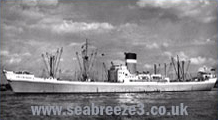
City of Brisbane 22-26mts
451 ft long Beam 57 ft Sunk 13/8/1918 This wreck is broken in two parts and has a lot of dead mans fingers growing on exterior which form the home of quite a few common crabs and various fish life. This can be interesting for photo’s on a clear visibility day depth from 22 to 26 mts, dependant on tide. History: City of Brisbane SS; 7.094 ton 451ft by 57beam steamship. Sunk: 14th August 1918 Torpedoed by the UB-57, her last victim. Thanks to Steve Cheshire for sending us this image
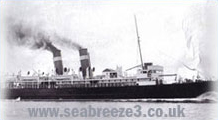
Donogale 48-52mts
Originally owned by the Midland Railway Company, the Donegal was requisitioned by the Admiralty in 1915 for conversion to a hospital ship. On 17 April 1917 she was being used to carry 639 wounded soldiers from Le Harve to Southampton when she was torpedoed and sunk by UC-21. Today the Donegal sits in 48 mts of water upright. A deep wreck in 48mts of water in an area of extreme tides, but has periods of excellent visibility. On a spectacular visibility day in 2005 a diver had a swim off the bow some 44mts and recovered the bell, a superb one it is too!. She sits upright but broken. The first time I dived her the fish life was so prolific I thought I hade missed the wreck swimming into the shoal, I found the bridge. I have the D------- does anyone have the ‘onogale’ they can have the D!!. At 48mts she is a deep-air dive but a light mix makes it a better dive, you might even get one of those large portholes still on her. The helm and some of the bridge section can still be seen in place. An interesting dive lots of original ship features still in place, this is a deep dark wreck with the need for a good main light. The wreck is 50 miles from Brighton and is usually dived on one of our cross channel trips to Cherbourg, worth the trip. But can be done on a day trip (these are the words of one of my divers)
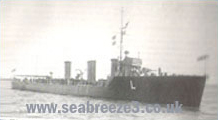
HMS Minon 50-54mts
An M-class destroyer launched in September 1915 .She is 1,025 tons and 276ft long with a 26ft beam. They were armed with three 4-inch guns, one 2-pounder pom-pom and four 21inch torpedo tubes in pairs. She had a maximum speed of 34 knots. History: Minion HMS was a 1.025 ton WW1 M-class destroyer. She measured 276x26ft. She waslost under tow to the breakers
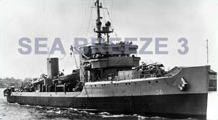
HMS Osprey
Must rate as one of the top three wrecks in the English Channel. An intact minesweeper lying on her port side with the bronze wheelhouse still intact. Take a look in the wheelhouse and see the bridge gear still inside. The wreck is 50 miles from Brighton and is usually dived on one of our cross channel trips to Cherbourg, worth the trip. But can be done on a day trip
King West Rock 16mts
This is a series of rock ledges at a depth of 12 to 16 mts, excellent for novice training. Large areas of sand between ledges, good sea life; crabs, lobbies and flatties with a few wrasse on occasion. This dive is a drift dive

Oceana 5-30mts
468 ft long Beam 52 ft Sunk 5/3/1912This is one of the most interesting wrecks on the south coast, every diver will find something of interest. Whether it will be sea life, portholes, crabs & scallops or maybe even a silver bar left over from the cargo, which they say some has still not been recovered!Depth 25 mts dependant on tide the wreck stands up 8 to 10 mts in places. She sits on gravel ground and usually has good visibility. History :6.610 ton P&O Linner, Built 1888, 468ftx52ft , 7000hp triple expansion engines. Cargo: General plus £7 P&O passenger ship, came into collision with the steel 4 mast barque Pisagna, which made her sink. Pisagna herself was towed into Dover. A vast amount of silver inglots and gold coins was present at the time of sinking. The ship was salvaged, but some silver has been reported as missing 47.110 worth of gold and silver ingots, 40 passengers, 210 crew, London to Bombay. Sunk: 16 march 1912, In collision with Pisagua, 2850 ton . Nine Oceana drowned when lifeboat capsized. HSAC : 6610 ton P&O liner, built 1888. 468ftx52ft. 7000hp triple expansion engines. General, plus 747,110 worth of gold and silver ingots. 40 passengers, 210 crew, London to Bombay. Sunk: 16 March, 1912, in collision with Pisagua, 2850 ton German four-masted steel barque. Nine from Oceana drowned when lifeboat capsized. All except a few ingots recovered in immediate diving salvage
Pentrych 18- 25mts
The wreck of the 3,382-ton British steamer laden with coal lies on the seabed at 25mts.The wreck is broken up amidships. Her big boilers are still prominent with the stern and bow sections standing 5 mts proud. The Penntyrch makes a good dive as she is still ‘ship like’.Locally known as the six miler due to its distance, the Pentrych is a lovely wreck in good visibility. Sunk in 1918 by the submarine UB40, most of her middle section has disappeared but her large boilers are still prominent amidships and the Anchor can still be seen on the bow and the stern section makes an excellent starting point. Towards the stern there is a large gun to be seen in amongst all the other mangled parts. Just forward of the stern on the starboard side you'll find a large propeller. In June 2005 one of the blades was covered in a carpet of beautiful Jewel Anemones, a rarely seen species in our Sussex waters.This is a big wreck and takes a good 25 minutes to look around. Depths are 18-25 metres.Again, as with most wrecks the fish life is usually prolific with lobsters,crabs congers, wrasse, bass & Pollack,Cod commonly seen
Rotting Dean Rock 6-12mts
This site is made up mainly of rock and chalk gullies, a shallow drift site with some good sea life
Steam Trawler 22mts
This wreck is described as a fun wreck. She stands upright with a list to starboard, she is covered in mussels, her prop and ruder are intact, she is 98ft long and has a beam of 31ft.Most of her superstructure has gone. But if you want to show a novice a ship like wreck, this is the one
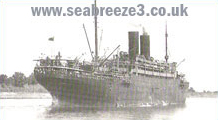
The Alaunia 36mts
The biggest wreck in Sussex waters, this 13,405-ton Cunard was built of steel in 1913.Though the wreck has been swept she is remarkably intact, she is broken up amidships and towards the stern. The wheelhouse, more or less intact

The Alberni 66mts
Canadian “Flower Class” Corvette sunk after being torpedoed by U-480 on 21 August 1944 with the loss of 59 of her crew. Today she sits on her side, intact, 12 mts proud in 66mts.The ‘Albernir’ is in the same area as the Osprey and has the usual excellent visibility it’s a long way 42miles the same as the osprey but is more easily accessed 66mts dive
The Aristos
The Aristos was a Greek cargo vessel which was built in 1937 and floundered after a collision with the Linde. She sank 16 miles off Beachy Head in dence fog in 1967. She was carrying general cargo and was some 5189 tons so a fairly large sized vessel which happily accommodates 12 divers. A modern ship for diving on but visually a excellent dive when the visibility is in shore. She sits bolt upright and very ship shape the most impressive being the bow which still has the two Admiralty anchors still hanging in situ.You can swim the whole length of the wreck in the 50mtr range the seabed is 60mtrs plus but there is no point going there the fun is on the top of this wreck.This wreck is in the deep air range but for safety is best done on a light mix.You swim away from the bow past the winches and the bow mast lays across the wreck. Next stop the bridge area which is accessible with the helm securely fastened. All the holds are easily accessed as is the accommodation block but do be careful of silt outs this is a big wreck. When you get to the stern the rudder is still there as is the prop. There is good fish life on this wreck and a excellent visual dive. One to recommended

The Clan Macmillan 60- 65mts
This is a dive for experienced Tri-Mix divers only. The Clan Macmillan was a armed merchantman 396ft long 48ft beam sunk 24/3/1917, she now lies in 65mts on a light silt seabed. The wreck sits upright but well broken in two parts about 20 ft apart at the base of the wreck, this is where the two torpedoes hit. The top of the wreck is at 50-53mts to the deck with lots of holes to gain access to the interior beware silts easily use a line. The stern section has a large trawl net covering the break. This ship was thought to be near Newhaven (see dive Sussex site 216 clan Macmillan and clodmore) but is in fact 18 miles off Brighton It was identified by Peacehaven diver and instructor Ian Hanness in 2004

The Duke Of Buccleugh 60-65mts
The Duke, as she is known, is a deep air dive but best done on gas. You touch metal at 50mts but for the most part you are at 55 mts.She was carrying a cargo of plates and glass wear, you can not help but take a souvenir .Make sure you don’t bag up the white ones-there not collectable! The stern stands the highest and that’s were collapsed holds can be entered with caution .There are many designs to be had and even the old pothole remains but this really is a china dive. Visibility is usually good and she stands upright and easy to navigate.Swim under amidships and you have glasses and candle holders and blue glasses .Swim further along to the bow and the wreck is very broken, keep your eyes open for the odd copper ingot in the sand. Take 2 goody bags! History: 3.099 ton four-masted iron steamer, built 1874. 380ftx38ft. 500hp engines. Cargo: 600 tons hand-painted Belgian china and glassware, 2.533 tons of iron rails and machinery, Middlesbrough and Antwerp for Madras. Sunk: 7 March, 1889 in night collision with 1.478 ton sailing ship Vandalia. All 47 crew of Duke of Buccleugh lost

The Empire Javelin 65mts
This steam ship of 7,177 tons and 400 feet long was torpedoed by a German submarine on 28 December 1944 and now lies some 50 miles from Brighton A deep wreck in 65mts of water in an area of extreme tides, the helm and some of the bridge section can still be seen in place. An interesting dive lots of original ship features still in place, this is a deep dark wreck with the need for a good main light. The wreck is 50 miles from Brighton and is usually dived on one of our cross channel trips to Cherbourg, which is well worth the trip and can be done on a day trip
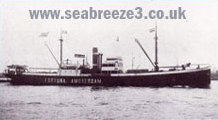
The Fortuna 28-32mts
The Dutch steamship of 1,254 tons 251 ft long sunk 22/10/1916 after hitting a mine.Excellent dive, cargo of cement bags can still be seen on deck and hold. Good for penetration of the wreck use line reel as can also silt quickly. Exterior of wreck has some deck fittings in place, area is surrounded by scallop beds, the skipper loves them! History:1913; N.V. Werf Rijkee & Co; 1.254 tons; 251.4x36.2x16; 150 nhp; triple expansion engines. The Dutch steamship Fortuna was bound from Rotterdam to Cardiff on October 22nd, 1916, when she struck a mine laid by the Germane minelaying submarine UC-16. She sank nine miles S.W. of Beachy Head, with the loss of 15 of her crew
The Inverclyde 20mts
A shallow wreck site at 20mts, mostly flat broken plate scattered over an area of seabed with the boiler section being the largest are to be found, another good shallow novice training site, can lead into a drift dive; air permitting
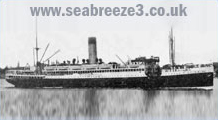
The Lanfranc 52-56mts
Sunk 17 April 1917 by torpedo an excellent wreck dive sitting upright in 50mts. If you want to dive a wreck that looks like it has been placed on the seabed just for divers this is it. The best part of the dive is a visit to the stern section, an easy penetration down one deck level leads to a scenic area lit by the many portholes some still in tact, good photographic area with lots of fish life and good light.The amidships area was damaged by the torpedo hit and is well worth a rummage, bow and stern intact. (pictures of similar ship) ships were pooled under Blue Star ) Lanfranc HMS. Built: Caledon Shipbuilding & Engineering Co., Dundee; Dimensions: 418.5 x 52.3 x 27.2 feet; Tonnage: Gross: 6287 Net: 3662; Propulsion: Twin screw, triple expansion steam engine of 850 nhp, 12 kts by builder; Type: Passenger/Cargo Liner; Launched: 18/10/1906 as Lanfranc at the cost of £122,000; Maiden voyage: 18/02/1907; Commissioned: 6/10/1915 as a hospital ship HMHS Lanfranc with accommodation for 403 wounded; 17/04/1917 bound for Southampton by the German submarine UB-40. 17 British and 17 German patients were lost. Like many of her sisters her commercial trading life was foreshortened by the outbreak of WWI, when she was commissioned as a hospital ship HMHS Lanfranc. Capable of carrying 403 wounded from the battlefields of Northern France back to England. On the 17th April 1917 at 19:30 hrs while bound for Southampton she she was torpedoed by the German Submarine UB-40, some 4 miles northeast of Le Havre. At the time she had 387 patients of which 167 were German POWS. Of these 326 were cot patients. Some 570 survivors were picked up by the destroyers HMS Badger and HMS Jackal aided by HMS P 47 and the French patrol boat Roitelet, and taken to Portsmouth. The Booth Line ran passenger services from the United Kingdom right up to Manaus - 1,000 miles up the Amazon. Founded in the 1860s, they took over the Red Cross Line in 1901 and the Iquitos Steam Ship Company in 1911. In 1946 the Booth Line was sold to the Vestey Group of companies and in 1975 all the group's Ship Management Ltd and the Booth Line ceased to exist as a separate entity

The Moldavia 50-55mts
The Moldavia or ‘the moll’ as she is referred to as a 9500ton 521 foot liner on her port side. This, for me, rates as one of the best dives in the channel. It can be a challenging dive. She’s 30 miles from Brighton and is our favourite dive early in the season, as the visibility is usually excellent. The journey is well worth the effort; you can swim the length of her in one dive and never have to go deeper than 38-40mts. There’s lots of places to enter the wreck, but beware in bad visibility stay on the outside, you will still be rewarded with a good dive. The ships bell has never been found, so good hunting! This is a very big wreck and needs a number of dives to cover it; the seabed area around her doees not hold much interest so stay on the main wreck. History: Moldavia SS; 9.505 ton P&O liner, built Greenock 1903. Commandeered by government as armed merchant cruiser 1915. 520ftx58ft. 340hp triple-expansion engines. Armed: Eight 6in guns. 900 US troops, Halifax, Nova Scotia, for London. Sunk: 23 May, 1918, by one torpedo from UB-57 (Oberleutnant Johann Lohs). 57 US soldiers killed

The Nyon 45mts
The Swiss motor ship of 5,364 tons. Now she lies east-west, with her bows to the west on a sea bed of soft sand. She is well broken, but her bridge is still her highest point
The Ramsgarth 25-30mts
The Ramsgarth is a small British merchantman of 1,553tons, was not armed when she was captured by UB-39 on November1916. Now she lies on her starboard side upright and is the highest point of the wreck, standing 5mts proud. The stern is also intact. But the mid-section has collapsed. The boiler is clear and the engine can be seen. Visibility in this area is often good and be over 15mts.A very good spot for lobsters, which are often seen out in the open around the wreck

The Waterford 30/34mts
The Waterford 270 ft long beam of 37 ft, sunken 14/4/1949 lying 8 miles off Brighton makes excellent sports diver’s wreck Still recognisably ship-shape, her stern & bow sections are still fairly intact, but the mid-section is badly broken. she is an impressive Wreck Sitting upright at 36 mts,and stands up 8 mts off the seabed.Her stern and bow sections are still fairly intact, but the mid-section is badly broken.Fish life includes the normal dense shoals of whiting, pollack, wrasse, conger eels, lobster & crabs.And scallops can be found on the sea bed around the wreck. She is covered in Dead Mans Fingers and many other species of anemones. History: Built by Caldon Ship & Engineering Co. Ltd, Dundee Scotland, for the Clyde Shipping Co Ltd, for service on the Liverpool to Waterford, Southern Ireland passenger service. 1.344 tons, 270' long by 37' wide. She had accommodation for about 40 passengers. She was sold off in 1946 to Palgrave Murphy, shipowners of Dublin, when she was re-named as the City o f Waterford. She gave just three years service between Dublin and the Continent (Belgium, Holland and Germany), when in she was involved in a collision in thick fog some 8 miles off Brighton, with a much larger steamer, the Marpessa, a 5,478 ton Greek owned ship, on April 14th 1949. She had 1.000 tons of general cargo on board
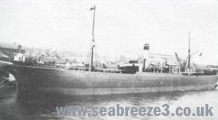
TR Thompson 32-36mts
The 3,538-ton T.R Thompson now lies in 34mts of water with her bows to the east and partially buried. Her superstructure has collapsed, and the highest point is the stern, which is 7mts proud. She is upright with a bad break almost halfway along her length. A good spot for lobsters History: 5.226 ton 360 ft Armed Merchantman. Torpedoed by UB-57, master and 32 crew died. (source bsac: 3.538 tons, built 1897, sunk 1918, depth 30, height 14, Dive details: Recognisable shape, collapsing internally, upright with a bad break half-way along, gun on aft deck, cargo iron ore ) 3538 ton cargo steamer, built 1897. 360ftx47ft. Armed with 4.7in gun on stern. 301hp triple expansion engines. 5.600 tons iron ore, Algeria to Middlesbrough. Sunk: 29 March, 1918, by single torpedo from UB-57. Three saved from crew of 36. War records say vessel was probably sunk by gunfire from a german submarine. 13 lives lost
West And Palace Pier 6-12mts
These two sites are similar to wreck sites for life and wreckage without the depth; both sites are 6 to 12 mts making this a good shallow training site. Goodies from the past maybe found around both piers
Other Wrecks Include
Ashford 42mts Tycho 33mts Quail 44mts Hms Kerrado 40mts Alaunia-Cunard-Liner 36mts Ashford 42mts


